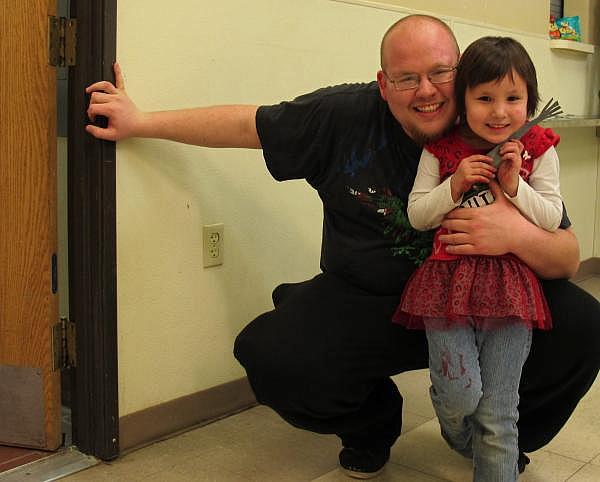‘Diabetes Is Not Our Way’: Cheyenne River Youth Release a Prevention Campaign
Stephanie Woodard wrote this story for The Indian Country Today Media Newtork as a 2012 National Health Journalism Fellow.Other Stories in this series include:
American Indian Youth in Crisis: Tribes Grapple With a Suicide Emergency
Rough justice in Indian Child Welfare
Tribes Take on Youth Suicide With Skits, Ceremonies and Mustangs
Alaska Natives Tackle Youth Suicide With Lessons From the Land

Eagle Butte, South Dakota—The Cheyenne River Youth Project (CRYP) has just fielded a major diabetes awareness and prevention campaign. The project includes a 30-minute video called “Diabetes Is Not Our Way”; 10 short films featuring prominent community members, collectively referred to as “Indigenous Perspectives”; and three public service announcements for television and online use.
The media materials are suitable for any Native community, said CRYP executive director Julie Garreau: “We need to share information and learn from each other to fight this latest threat to our long-term health and well-being.”
In one of the short videos, elder Marcella LeBeau provides a vivid personal perspective on the events that precipitated the chronic diseases, including diabetes, that
disproportionately afflict Native people today. A retired nurse who served in World War II, including at the Battle of the Bulge, she recalls onscreen that one of her grandfathers signed the Treaty of 1868. The agreement, which established the Great Sioux Reservation, meant he went overnight from hunting to support his family to lining up for rations of minimal nutritional value. “The world turned over,” said LeBeau in a separate interview.
CRYP diabetes educator John Finn calls diabetes “a true epidemic” in Native America and notes that its onset is skewing ever younger in tribal communities. The poor-quality federal food program, inadequate health care and an increasingly sedentary lifestyle have taken a toll, according to Finn. He observes that many of Cheyenne River’s children already have conditions more typical of elderly patients, including elevated blood pressure, arterial plaque, enlarged hearts and the like. “These children are at tremendous risk,” said Finn.
How to fix this? Wholesome food and exercise are crucial, at Cheyenne River and throughout Indian country, said CRYP’s wellness coordinator, Tammy Eagle Hunter. The 18-and-under cohort enrolled in CRYP’s after-school program eat healthy snacks and meals and enjoy basketball and other sports, a walking club and circuit training in a new fitness center. “Soon we’ll be doing fitness assessments—checking the children’s BMI, heart rate and other markers,” said Eagle Hunter.
On a recent chilly winter afternoon, Cheyenne River children arrived at the center. Teens in sweatshirts and puffy parkas took carrot sticks and apple slices from a platter as they signed up for the basketball tournament Eagle Hunter was supervising. In an adjoining building, 4- to 12-year-olds colored and painted with the cadre of volunteers the center welcomes from across the United States and around the world. Earlier, they’d played tag in the center’s gym and later would scamper around the new fitness center, with its elliptical machines, stationary bikes, treadmills and weight-lifting equipment.
Over the summer and fall, the little ones plant and harvest in the center’s two-acre garden, making them experts on all matters fruit and veggie. When I asked about favorites, Matthew Bobtail Bear, 7, quickly declared carrots the best vegetable; Rosie White Mountain, 11, voted for raspberries (“watch out for bees when you’re picking them!”); Angel White Mountain, 7, said she loved watermelon; and Rhaiyan Tomko, 12, proclaimed the ne plus ultra of fresh, modern cooking: “Our spaghetti sauce is made with real tomatoes!”
Meanwhile, Alyson Potter, 4, scrutinized my red-and-white Indian Country Today Media Networkbadge. “P-R-E-S-S,” she said, firmly tapping each letter. “Press!”
Most people—not just children—have gotten the message that eating fruits and vegetables is important, agreed LeBeau, who is the picture of health and just climbed Bear Butte for her 93rd birthday. “It’s soda pop and junk food—all those terrible things added into the good diet—that undermines it and does the harm,” she said. “You can see cases of soda pop—mountains of them— piled high in the aisles of our grocery store. The idea that someone would sell something so destructive to a fellow tribal member—it’s criminal!”
CRYP is eager to share its diabetes-prevention materials, which were funded by the Diabetes Action Research and Education Foundation and the Lowenstein Foundation; Seventh Generation Fund for Indian Development filmed the segments. View the segments on the group’s website, lakotayouth.org, and on the YouTube channel, youtube.co/user/CheyenneRiverYP.
“We [indigenous people] need solid information about nutrition and exercise,” said Garreau. “Diabetes is not our way. We must reclaim the health of our communities and the security of our futures as Native people. The time to act is now.”
This story was originally published on December 6, 2012 in Indian Country Today Media Network
Photo Credits: Stephanie Woodard

